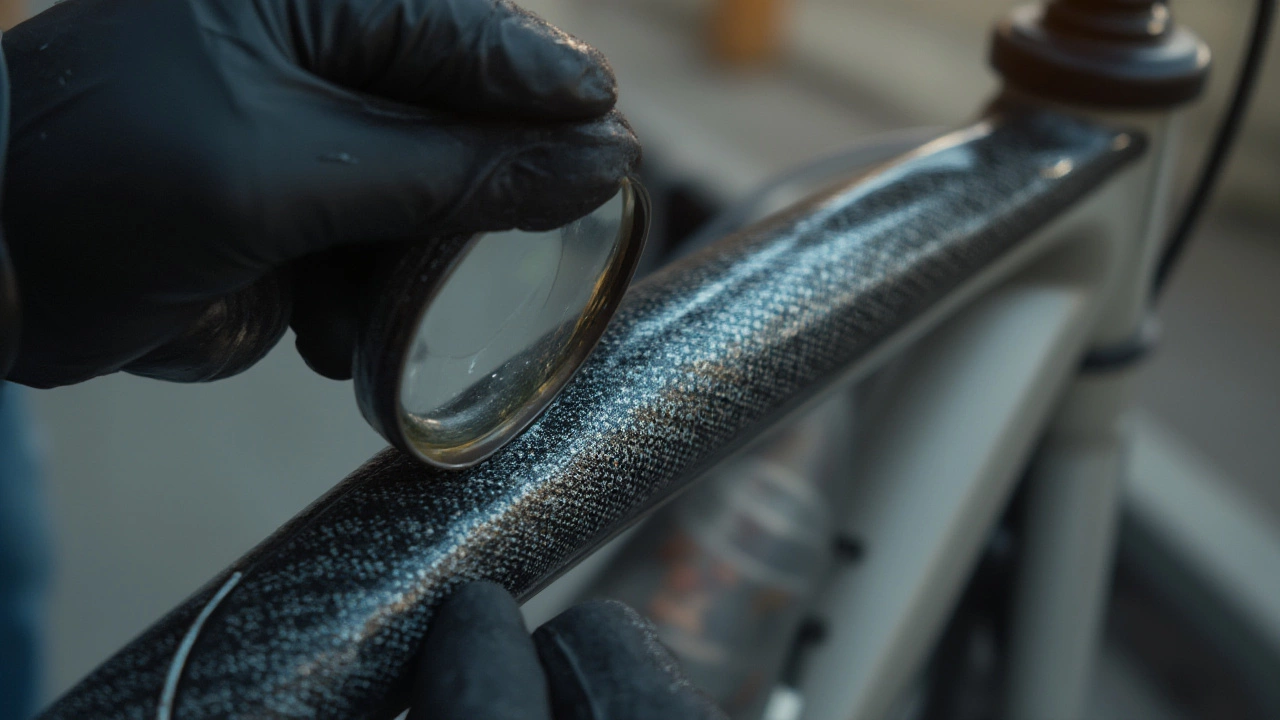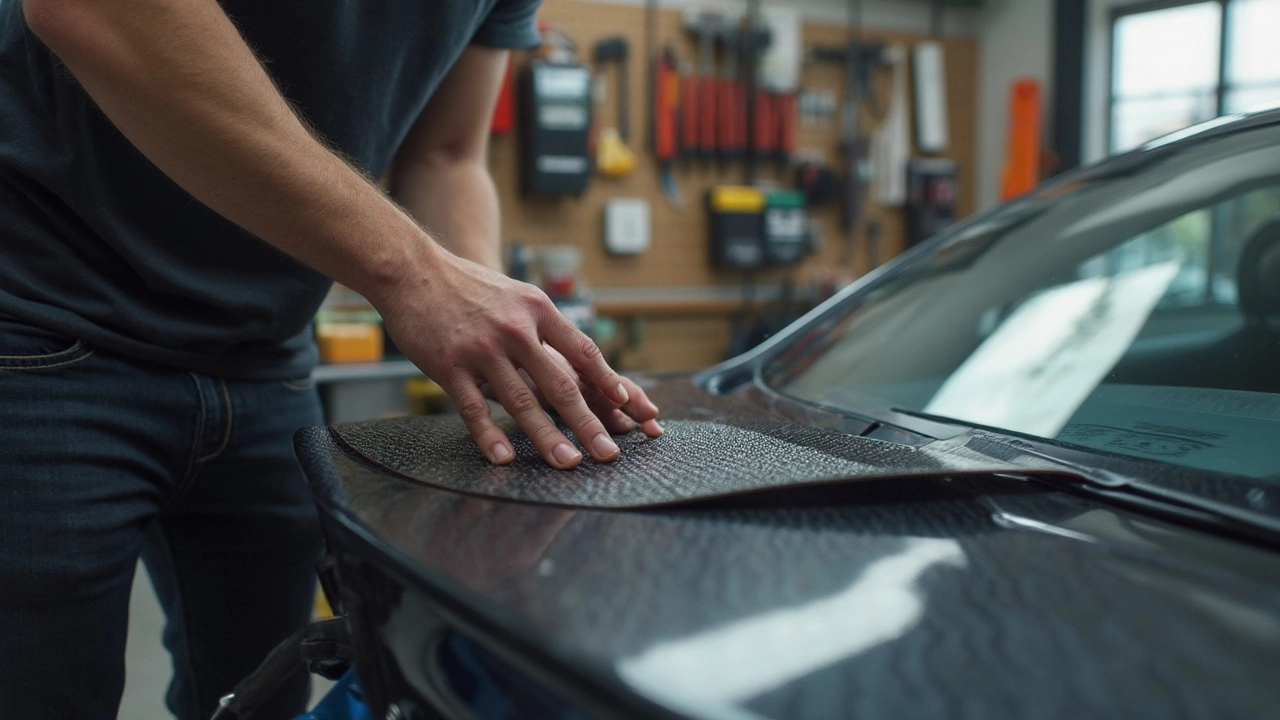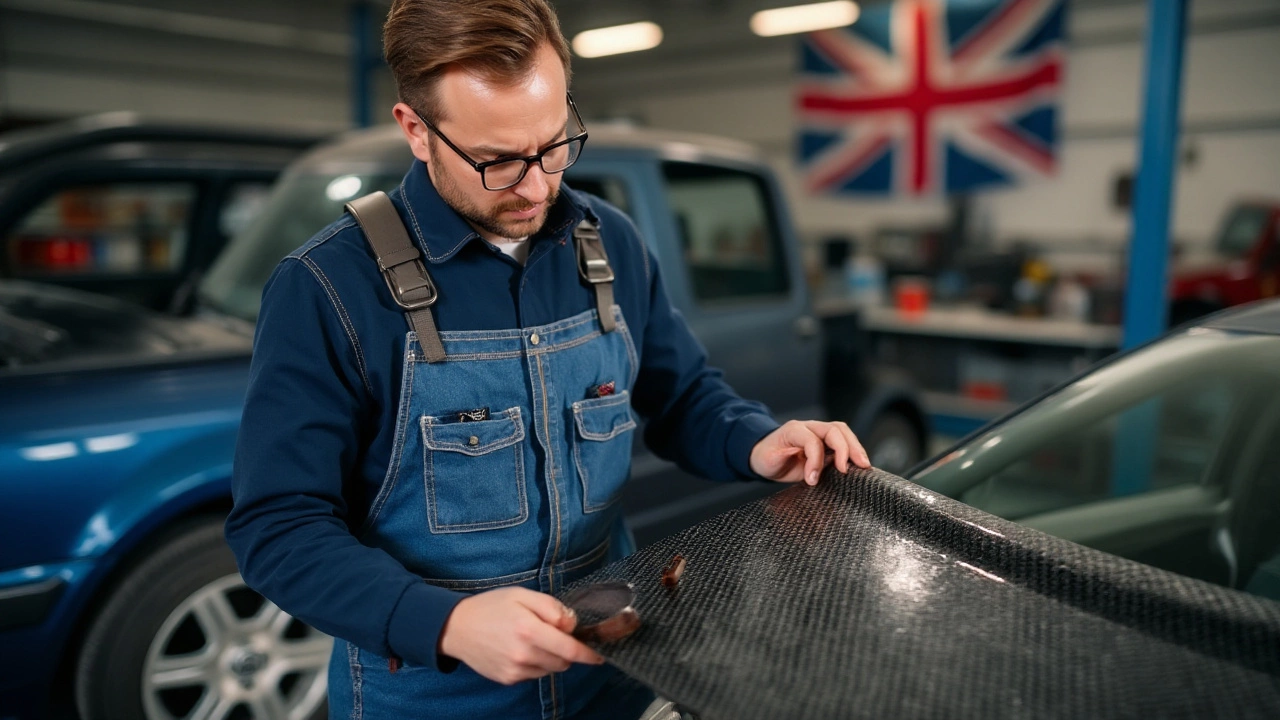If you’ve ever walked past a sports car and wondered why the roof, spoiler or interior feels so sleek, the answer is often carbon fiber. This high‑tech material cuts weight, adds rigidity and gives a futuristic look without breaking the bank (if you know where to look). In this guide we’ll break down what makes carbon fiber special, where you can use it on your car, and how to buy and care for the parts you choose.
Carbon fiber is basically a bundle of tiny glass‑like fibers glued together with resin. The result is a panel that’s up to 70% lighter than steel and 30% lighter than aluminum, yet it’s just as stiff. Less weight means the engine has to work less, which translates to better acceleration, fuel economy and handling. At the same time, the added stiffness improves chassis response, so the car feels more planted on the road.
Another big win is style. The woven pattern of carbon fiber is instantly recognizable and adds a high‑performance vibe. Even if you only install a small part, the visual impact can make the whole car look upgraded.
Most car fans start with the obvious: a carbon fiber hood, roof, or spoiler. These are the easiest to bolt on and give the biggest visual lift. If you’re after performance, consider carbon fiber interior pieces like shift knobs, trim strips, or even a lightweight driveshaft. Some enthusiasts replace suspension components such as control arms or sway bars with carbon versions for reduced unsprung weight.
Don’t forget the smaller details – carbon fiber mirrors, brake calipers and wheel rims can add a cohesive look without major modifications. The key is to pick parts that match your styling goals and budget.
Because carbon fiber is premium, there are cheap knock‑offs that look the part but break easily. Here’s a quick checklist:
When you get the part, double‑check fitment before you hammer it in. A little extra time now saves a lot of frustration later.
Carbon fiber doesn’t rust, but it can get dirty or develop surface cracks if you’re rough with it. Clean it with a mild soap and water, then dry with a soft cloth. Avoid harsh chemicals like acetone or strong detergents – they can damage the resin. For a glossy finish, use a dedicated carbon fiber polish or a light coat of automotive wax. If the weave starts to look dull, a quick polish will bring back the sparkle.
Finally, protect the parts from direct UV exposure for long periods. A clear coat or UV‑resistant wrap can help preserve the color and strength.
Carbon fiber is a practical way to make your car lighter, stronger and more eye‑catching. Pick the right parts, buy from trustworthy sources, and keep them clean – and you’ll enjoy the benefits for years to come.

Wondering if carbon fiber cracks over time? Dive into real-world facts, how to spot problems, avoid damage, and make your carbon parts last.

Thinking about trimming or shaping your carbon fiber spoiler? It's not as hard as you might think, but you do need the right gear and some patience. This guide breaks down the safest and cleanest way to cut carbon fiber sheets for home spoiler projects. You'll learn why carbon fiber can be tricky, which tools are actually worth using, and how to avoid common DIY mistakes. Stick around and you'll cut confidently without trashing your garage or your new spoiler.

Carbon fiber is a game-changer in the automotive world, especially for car enthusiasts looking to enhance their vehicle's performance and aesthetics. Known for its impressive strength-to-weight ratio, carbon fiber doesn't just make your ride look sleek—it boosts speed and improves fuel efficiency too. It's resistant to corrosion unlike metals, ensuring durability over time. Discover why carbon fiber is more than just flashy material and see how it transforms your driving experience.

Carbon fiber is a powerhouse material known for its strength and lightweight attributes, widely used in car spoilers and even in the aerospace industry. But can it really stop a bullet? This article delves into the properties of carbon fiber, its possible applications in bulletproofing, and how its unique characteristics make it ideal for high-performance car parts. Get an understanding of why carbon fiber is such a revolutionary material.

Carbon fiber spoilers are highly sought after for their ability to improve vehicle aerodynamics and enhance performance. However, these advanced automotive add-ons come with their own set of challenges. This article explores the potential disadvantages of carbon fiber spoilers, including their cost, vulnerability to damage, and impact on car handling. Understanding these aspects can help car enthusiasts make informed decisions about adding a spoiler to their vehicles.

Carbon fiber, known for its strength and lightweight properties, is a popular material for spoilers in high-performance vehicles. However, there's curiosity around how well it withstands prolonged sun exposure. This article explores the effects of sunlight on carbon fiber, especially in automotive applications, and offers maintenance tips to ensure longevity. Let's delve into whether sunlight can cause cracking in carbon fiber and how to best protect your car's aerodynamic enhancements.

In the world of automotive enhancements, carbon fiber spoilers have gained popularity due to their lightweight and aesthetic appeal. However, distinguishing genuine carbon fiber from imitations can be challenging. This article provides insight into identifying real carbon fiber, explaining its unique characteristics and offering practical tips. Learn how to make informed choices for your vehicle and avoid being misled by convincing replicas.

Carbon fiber spoilers are known for their lightweight and strength, making them a popular choice in automotive design. However, their production and maintenance come with several challenges. These include high manufacturing costs, potential environmental impact, and susceptibility to damage. Understanding these issues can help car enthusiasts and manufacturers make informed decisions. This article explores the main problem with carbon, particularly focusing on its application in spoilers.